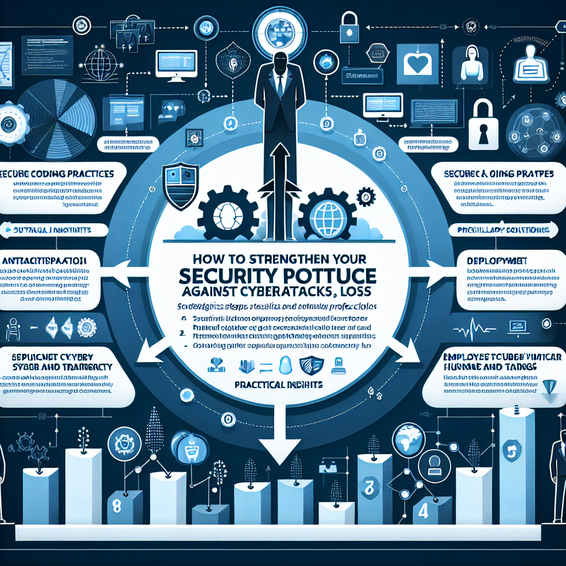Cyberattacks and data loss events are a reality for any modern organization. Threats are evolving quickly, and attacks can cripple operations or damage brand reputation overnight. If you’re in the trenches of IT or security, there’s no room for complacency—fortifying your defenses is a continuous priority. In this post, we’ll dig into practical strategies for strengthening your security posture, minimizing damage from attacks, and building true organizational resilience.
Lessons Learned from Recent High-Profile Security Incidents
Every serious breach offers key takeaways. The most devastating cyberattacks often exploit weak points: unpatched systems, poor network segmentation, lax access controls, or ineffective monitoring. Beyond financial loss, the impact on trust can set companies back for years. In our analysis of recent incidents, organizations with mature incident response practices, layered network defenses, and ongoing employee awareness fared markedly better than those relying on static security controls. For an in-depth look at how layered defense can make a difference, our Security Defense in Depth Guide offers actionable frameworks you can implement now.
Root cause analysis often points to common themes: insufficient visibility, delay in detection, and lack of a rehearsed response plan. These findings underscore the need for organizations of all sizes to move beyond checkbox compliance. Building a culture of proactive security and regular risk assessment is no longer optional. For more context on how organizations are adapting, check out our breakdown on Building Cyber Resilience for Business Continuity.
From a business perspective, data loss incidents are particularly punishing. Sensitive data exposure can trigger regulatory fines, litigation, and operational chaos. It’s not only about keeping attackers out—it’s about limiting the damage when (not if) something goes wrong. The most resilient organizations are those that expect the unexpected and invest in cyber hygiene at every level, from boardroom to helpdesk.
Actionable Steps for IT Professionals: Reducing Risk and Improving Security Posture
- Prioritize Patch Management: Keep critical systems, endpoints, and software up to date with timely patches—automate wherever possible to close vulnerabilities fast.
- Improve Network Segmentation: Limit blast radius by segmenting sensitive data and mission-critical apps away from general users. Implement zero-trust principles for least-privilege access.
- Automate Detection and Response: Deploy Security Information and Event Management (SIEM) and orchestration tools to catch threats in real time. Leverage threat intelligence feeds and continuous monitoring to stay ahead of attackers.
- Test Your Incident Response: Run tabletop exercises, simulate attacks, and conduct red team assessments. Review your disaster recovery plans and ensure that backups are tested and ransomware-resilient.
- Regularly Educate Staff: Phishing and social engineering are still the top entry vectors. Train everyone—from executives to interns—on threat awareness and secure behaviors.
For deeper discussion of threat monitoring, read our post on Continuous Threat Monitoring for Enterprise Environments. When it comes to rapid containment, a well-documented, regularly tested incident response playbook is non-negotiable.
Best-in-Class Solutions to Defend Your Organization
Building layered defenses isn’t about buying the flashiest products—it’s about operational discipline. Enterprise-grade endpoint protection, network firewalls with advanced threat detection, and robust SIEM platforms are the backbone of modern defense. Tools like EDR/XDR bring visibility across cloud and on-premises infrastructure, helping you spot subtle attacks that bypass traditional tools. If your business handles sensitive information, consider deploying strong access controls and two-factor authentication (2FA) across critical applications—not just for admins.
- Integrate regular vulnerability scanning and automated patch deployment to stay ahead of new threats
- Use encrypted backups, stored offsite and disconnected from your network, to withstand ransomware attempts
- Leverage managed security services if resourcing or expertise in-house is limited—they can provide 24/7 monitoring and rapid incident response
Track developments and case studies by industry leaders, and benchmark your own security maturity annually. It’s not about achieving perfection, but about staying relentless and never assuming “that won’t happen here.”
Conclusion: Make Cybersecurity a Daily Discipline
Every organization, big or small, is a target. The right mindset, paired with disciplined, everyday security routines, drastically reduces your risk. Identify your gaps, take decisive action, and keep learning. Cyber resilience isn’t a product; it’s a journey. Commit to building your defenses today—because tomorrow’s attackers are always evolving. For more practical security insights, make sure to check out our growing library of expert resources.
